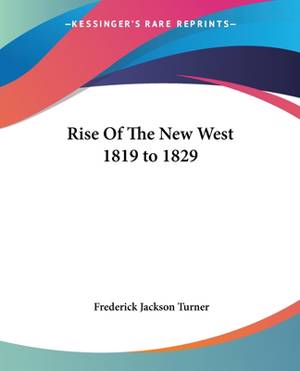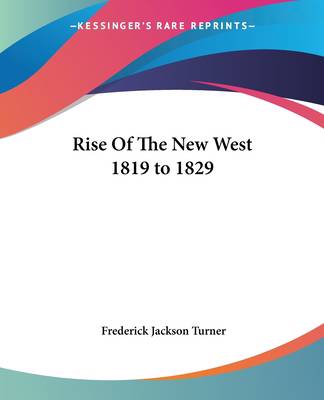
- Afhalen na 1 uur in een winkel met voorraad
- Gratis thuislevering in België vanaf € 30
- Ruim aanbod met 7 miljoen producten
- Afhalen na 1 uur in een winkel met voorraad
- Gratis thuislevering in België vanaf € 30
- Ruim aanbod met 7 miljoen producten
Zoeken
€ 35,45
+ 70 punten
Uitvoering
Omschrijving
""Rise of the New West: 1819 to 1829"" is a historical book written by Frederick Jackson Turner. The book explores the period of time when the United States was expanding westward and experiencing significant changes in its political and economic landscape. Turner's analysis focuses on the years between 1819 and 1829, a decade that saw the emergence of new states, the expansion of the frontier, and the rise of new political ideologies. The book covers a wide range of topics, including the Missouri Compromise, the Indian Removal Act, and the development of the American economy. Turner argues that this period was marked by a shift in power from the old Eastern states to the new Western states, which were rapidly growing in population and influence. He also examines the impact of this shift on the country as a whole, including the tensions between North and South, the rise of sectionalism, and the eventual outbreak of the Civil War.Overall, ""Rise of the New West: 1819 to 1829"" is a comprehensive and insightful analysis of a pivotal period in American history. It offers a detailed look at the political, economic, and social changes that occurred during this time, and provides valuable insights into the forces that shaped the nation in the years to come.The effect of all this upon New York City was revolutionary. Its population increased from 123,000 in 1820 to 202,000 in 1830. Its real and personal estate rose in value from about seventy million dollars in 1820 to about one hundred and twenty-five million dollars in 1830. The most significant result of the canal was the development of the commerce of New York City, which rose from a market town for the Hudson River to be the metropolis of the north.This scarce antiquarian book is a facsimile reprint of the old original and may contain some imperfections such as library marks and notations. Because we believe this work is culturally important, we have made it available as part of our commitment for protecting, preserving, and promoting the world's literature in affordable, high quality, modern editions, that are true to their original work.
Specificaties
Betrokkenen
- Auteur(s):
- Uitgeverij:
Inhoud
- Aantal bladzijden:
- 196
- Taal:
- Engels
Eigenschappen
- Productcode (EAN):
- 9781419145049
- Verschijningsdatum:
- 17/06/2004
- Uitvoering:
- Paperback
- Formaat:
- Trade paperback (VS)
- Afmetingen:
- 190 mm x 239 mm
- Gewicht:
- 349 g

Alleen bij Standaard Boekhandel
+ 70 punten op je klantenkaart van Standaard Boekhandel
Beoordelingen
We publiceren alleen reviews die voldoen aan de voorwaarden voor reviews. Bekijk onze voorwaarden voor reviews.








